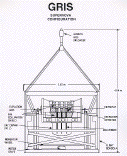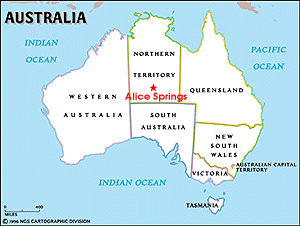The Gamma-Ray Imaging Spectrometer (GRIS)
 |
GRIS has been an extraordinarily successful balloon-borne instrument which
uses germanium detectors for high resolution gamma-ray spectroscopy. The
maiden flights of GRIS from Alice Springs, Australia in 1988 produced the
definitive measurements of gamma-ray lines from Supernova 1987A and the
positron annihilation line at 511 keV from the Galactic Center. These
extremely important lines were resolved, yielding crucial new clues about
the emission processes. Data from these flights yielded 2 Nature Letters,
and 3 Astrophysical Journal Letters, as well as a John Lindsay Memorial
Award for Science, GSFC's highest science award. |
| GRIS has a continued record of outstanding performance, with 9 successful
flights over
the past 8 years (click here for full flight record). In the fall of 1995, GRIS had three successful flights from Alice Springs, Australia in one balloon campaign - a record in scientific ballooning. A new configuration of GRIS was flown to measure the diffuse Galactic and diffuse Cosmic gamma-ray
spectrum with a wide-field collimator and blocking crystal mechanism. These flights yielded exciting new results about the formation of 26Al in our Galaxy which have been recently published in a Nature Letter (Nature, 7 Nov. 1996, v. 384). |
 |
 |
GRIS's last 2 flights from Alice Springs also included the piggyback instrument PoRTIA. By flying with PoRTIA both outside and inside the GRIS NaI shield and blocking crystal, important measurements of the CdZnTe detector background were made. These important results will be used in future balloon and spacecraft programs such as InFOCuS and BASIS. |
 Return to GRIS Homepage
Return to GRIS Homepage
|